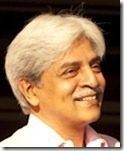When I first started writing a self-help book several years ago, I paused and asked myself what on earth I was trying to do. Would people actually read a book to find answers to burning questions? Would the quality of their lives really change by merely reading a book? And in our country, at that? Given that we operate on a ‘panchayat mode’ when it comes to conflict resolution, would we be willing to buy a book to deal with our issues? I still had no clear answers to these questions when my first self-help book was launched in 2002. As it turned out, I needn’t have worried, for the response to not only my first book, but my subsequent books (Westland’s ‘New Indian Marriage’ series) was unexpectedly remarkable. It appears that educated urban Indians are perfectly prepared to use the self-help route to find answers.
However, as one of my email interlocutors asked me, “If a marriage is coming apart or one has experienced extraordinary stress, wouldn’t one do better seeking professional intervention than reading a book?” In an ideal world, yes. But, in our country, there is still a strong stigma attached to seeing psychiatrists or counsellors. A book, though, can be read in relative anonymity and just like one finds it easier to open up to a stranger on a train, one might find it easier to establish an in-absentia-therapeutic relationship with the author of a book. Compared to suffering in silence, reading a book, seems to me a pretty good option.
Expecting people to resolve all their marital or other problems by reading a book would be foolhardy. But what I do expect to happen when one reads a self-help book, is that it might jump-start a process of seeking solutions. Rather than believe that nothing can be done, readers do feel empowered enough to seek solutions by talking, listening, reading some more, and maybe even talking to a therapist. In other words, reading a self-help book could be a very vital first step in moving out of the victim mode that most of us fall into when faced with a crisis, to a survivor mode that gets us out of emotional quagmires. But let us not for a moment believe that a book can offer us neat and pre-packaged solutions. I think the trick to using a self-help book is not to expect it to magically resolve all one’s problems, but to rather think of it as a piece in a jigsaw puzzle (a corner piece if the book is a good one). In other words the book is not going to change your life. But it can empower you to change your life.
That self-help books are here to stay is a well-documented fact of contemporary life. The truth is, we all need help and advice, whether it’s on cookery, gardening, adoption, relationships or healing the soul. The sooner we come to terms with this reality the better. Before we dismiss this tendency towards using self-help books as a ‘western’ phenomenon, let us remind ourselves of the phenomenal success, in our own country, of the Chicken Soup series and others like it. Obviously Indian readers are willing to invest in self-help books. In the final analysis, if we learn how to use self-help books well – as sources of inspiration and mental stimulation than of solutions, we might well find ourselves browsing for these online or at our friendly neighbourhood bookstore, and not just at airport bookstores while we wait for our delayed flight to be called.
(Dr Vijay Nagaswami is a couples counsellor. He has written two bestsellers for Westland’s ‘New Indian Marriage’ series: The 24 X 7 Marriage and The Fifty-50 Marriage. His next in the series, about handling infidelity, is 3’s A Crowd, out in November.)
